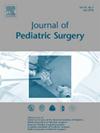个体化混合模型修复需要体外生命支持的先天性膈疝婴儿的结果。
IF 2.4
2区 医学
Q1 PEDIATRICS
引用次数: 0
摘要
婴儿先天性膈疝(CDH)需要体外生命支持(ECLS)的修复时机仍然存在争议。方法包括ECLS早期修复、ECLS晚期修复或ECLS脱管后修复;所有这些都有潜在的风险和好处。为了降低风险并实现收益最大化,我们的团队在2016年开发了一种基于产前风险分层的个性化混合模型。在这里,我们报告了该模型的结果。方法:这是一项对诊断为CDH需要ECLS的婴儿的单机构回顾性研究(2002-2023),根据时间协议对患者进行分组:延迟修复(DR;2002-2009),早期修复(ER;2010-2016)和混合模型(HM;2017 - 2023)。分析人口统计学、疾病特征和结果。采用卡方检验/Fisher’s exact检验/Kruskal-Wallis检验,p的显著性。结果:纳入103例婴儿,DR 35例(34%),ER 32例(31%),HM 36例(35%)。患者人口统计和产前严重程度的标记在组间相似。接受HM治疗的患者中位ECLS持续时间显著缩短(10天;IQR: 5,17)与DR(12天,IQR: 6,17)和ER(17天,IQR: 11,22)相比[p = 0.019]。与DR组(69%)和ER组(34%)相比,HM组(78%)的出院生存率最高[p]结论:我们展示了需要ECLS的CDH婴儿的生理谱,表明混合模型的实用性。这种个体化的方法可能有利于识别中度严重程度的患者,这些患者可以在修复之前进行脱管以减轻出血并发症。证据水平:III。本文章由计算机程序翻译,如有差异,请以英文原文为准。
Outcomes of an Individualized Hybrid Model for Repair of Infants With Congenital Diaphragmatic Hernia Requiring Extracorporeal Life Support
Introduction
Timing of repair for infants with congenital diaphragmatic hernia (CDH) requiring extracorporeal life support (ECLS) remains controversial. Approaches include early repair on ECLS, late repair on ECLS, or repair after ECLS decannulation; all have potential risks and benefits. To mitigate risk and maximize benefit, our group developed an individualized hybrid model in 2016 in which approach is based on prenatal risk stratification. Here we report the outcomes of this model.
Methods
This is a single-institution retrospective review (2002–2023) of infants diagnosed with CDH requiring ECLS, grouping patients according to temporal protocols: Delayed Repair (DR; 2002–2009), Early Repair (ER; 2010–2016), and Hybrid Model (HM; 2017–2023). Demographics, disease characteristics, and outcomes were analyzed. Chi-squared/Fisher's exact/Kruskal–Wallis tests were used, with significance of p < 0.05.
Results
103 infants were included– 35 (34 %) with DR, 32 (31 %) with ER, and 36 (35 %) using HM. Patient demographics and markers of prenatal severity were similar among groups. Median ECLS duration was significantly less in patients treated with HM (10 days; IQR: 5,17) compared to DR (12 days, IQR: 6,17) and ER (17 days, IQR: 11,22) [p = 0.019]. Survival to discharge was highest using the HM (78 %) compared to DR (69 %) and ER (34 %) groups [p < 0.001]. Subgroup analysis of the HM cohort demonstrated prenatal predictors differed significantly based on timing selected for repair.
Conclusion
We demonstrate a physiologic spectrum across infants with CDH requiring ECLS, suggesting utility of a hybrid model. This individualized approach may be beneficial in discerning patients of moderate severity who could be decannulated prior to repair to mitigate bleeding complications.
Level of Evidence
III.
求助全文
通过发布文献求助,成功后即可免费获取论文全文。
去求助
来源期刊
CiteScore
1.10
自引率
12.50%
发文量
569
审稿时长
38 days
期刊介绍:
The journal presents original contributions as well as a complete international abstracts section and other special departments to provide the most current source of information and references in pediatric surgery. The journal is based on the need to improve the surgical care of infants and children, not only through advances in physiology, pathology and surgical techniques, but also by attention to the unique emotional and physical needs of the young patient.

 求助内容:
求助内容: 应助结果提醒方式:
应助结果提醒方式:


